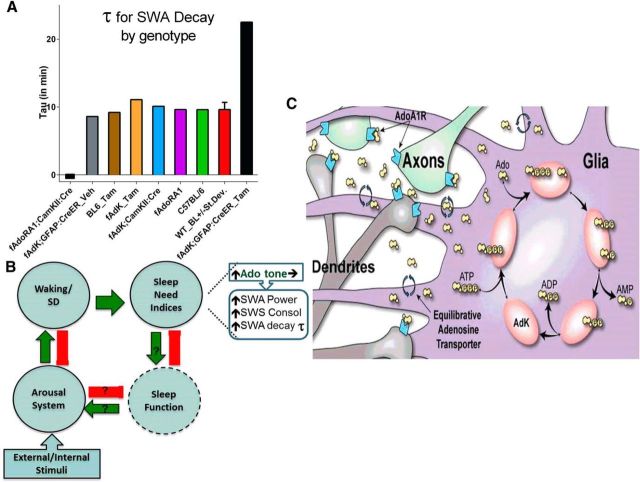Figure 7.
The decay time constant for SWA during the SWS episode is influenced by the genes coding for AdoRA and glial AdK. A, Histogram of the time constants for decay (τ) of SWA during an average SWS episode under baseline conditions for different genotypes. Loss of neuronal AdoRA1s (fAdoRA1;CaMKII:Cre) results in loss of decay. Reduction of glial AdK expression (fAdK;GFAP:CreER_Tam) increases τ by >10× the SD (SD = 1.1 min). B, Diagram depicting systems-level relationships between waking, which is facilitated by arousal and increases sleep need, and sleep function, which decreases sleep need and presumably enhances arousal. Increased waking results in increased Ado tone that increases sleep need indices. C, At the local circuit level, the expression of sleep need is mediated by Ado acting on neuronal AdoRA1 to facilitate rebound SWA in response to prolonged enforced waking. During SWS, Ado flows down its concentration gradient into glia by glial equilibrative transporters. There it is metabolized by the low-capacity but high-affinity glial enzyme, AdK, thus reducing the activation of neuronal AdoRA1 and thereby controlling the rate of SWA decay.

